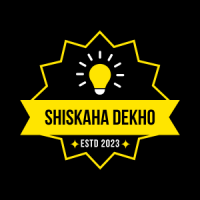The Future of SaaS Buisness

Strong 8k brings an ultra-HD IPTV experience to your living room and your pocket.
In the ever-evolving landscape of technology, Software as a Service (SaaS) has emerged as a transformative force, reshaping how businesses operate and scale. The SaaS model, which delivers software applications over the internet on a subscription basis, has become a cornerstone of modern IT infrastructure. This article delves into the future of SaaS, exploring emerging trends and innovations that are set to define the industry in the coming years.
1. AI and Machine Learning Integration
One of the most significant trends in SaaS is the integration of Artificial Intelligence (AI) and Machine Learning (ML). These technologies are no longer just supplementary but are becoming integral to SaaS platforms. AI-driven features, such as predictive analytics, personalized recommendations, and intelligent automation, are enhancing the functionality of SaaS applications.
AI and ML can analyze vast amounts of data to uncover insights and patterns that would be impossible for humans to discern manually. For instance, in customer relationship management (CRM) systems, AI can help predict customer behavior, personalize interactions, and optimize sales strategies. Similarly, in enterprise resource planning (ERP) systems, AI can streamline processes, reduce manual errors, and improve decision-making.
2. Rise of Vertical SaaS
While traditional SaaS solutions often cater to a broad range of industries, there is a growing trend towards vertical SaaS. Vertical SaaS solutions are tailored to the specific needs of particular industries, such as healthcare, finance, or manufacturing. These platforms offer specialized functionalities and compliance features that general-purpose SaaS solutions might lack.
Vertical SaaS allows companies in niche sectors to benefit from software designed with their unique challenges in mind. For example, a SaaS solution designed for the healthcare industry might include features for managing patient data, complying with HIPAA regulations, and integrating with electronic health records (EHR) systems. This level of specialization can drive greater efficiency and effectiveness in industry-specific processes.
3. Enhanced Security and Compliance
As data breaches and cyber threats become increasingly sophisticated, security and compliance are top priorities for SaaS providers. The future of SaaS will see a stronger emphasis on security measures, including advanced encryption techniques, multi-factor authentication, and real-time threat detection.
Regulatory compliance is also becoming more complex, with regulations such as GDPR, CCPA, and HIPAA imposing strict requirements on data handling and privacy. SaaS providers are investing heavily in compliance solutions to ensure they meet these standards and offer customers peace of mind regarding data security.
Moreover, SaaS platforms are likely to adopt a zero-trust security model, which assumes that threats could be both external and internal. This model emphasizes continuous verification of users and devices, minimizing the risk of unauthorized access and data breaches.
4. Low-Code and No-Code Development
The rise of low-code and no-code platforms is democratizing software development and transforming the SaaS landscape. These platforms allow users with little to no coding experience to build and customize applications through intuitive, drag-and-drop interfaces.
Low-code and no-code solutions empower businesses to quickly develop and deploy applications tailored to their specific needs without relying on extensive IT resources. This accelerates the innovation cycle and reduces the time to market for new applications. As a result, SaaS providers are increasingly incorporating low-code and no-code features into their platforms, enabling users to create custom workflows, automate processes, and integrate with other systems with ease.
5. Microservices Architecture
Microservices architecture is gaining traction in the SaaS world due to its flexibility and scalability. Unlike traditional monolithic applications, which are built as a single, unified entity, microservices break down applications into smaller, independent services that communicate through APIs.
This modular approach allows SaaS providers to develop, deploy, and scale individual components of their applications independently. As a result, updates and new features can be rolled out more quickly and with minimal disruption. Additionally, microservices enable better fault isolation, so if one service fails, it does not necessarily impact the entire application.
6. API-First Development
APIs (Application Programming Interfaces) have become essential for modern SaaS applications, facilitating seamless integration and interoperability between different systems. The API-first development approach prioritizes the design and development of APIs before building the application itself.
This approach ensures that SaaS platforms are designed with integration in mind from the outset, enabling easier connectivity with third-party applications and services. An API-first strategy allows businesses to create more flexible and extensible solutions, enhancing their ability to adapt to changing requirements and integrate with other tools in their technology stack.
7. Subscription and Pricing Innovations
The traditional subscription model for SaaS is evolving to accommodate changing customer preferences and market dynamics. Providers are experimenting with various pricing structures, including usage-based pricing, tiered pricing, and freemium models.
Usage-based pricing, for example, charges customers based on their consumption of the service, which can be more cost-effective for businesses with fluctuating needs. Tiered pricing offers multiple levels of service with varying features and capabilities, allowing customers to choose a plan that best fits their requirements. Freemium models provide basic functionality for free while offering premium features at a cost, attracting a broad user base and converting free users into paying customers over time.
8. Hybrid and Multi-Cloud Strategies
As businesses continue to adopt hybrid and multi-cloud strategies, SaaS providers are adapting their offerings to support these environments. Hybrid cloud solutions combine on-premises infrastructure with public and private cloud services, while multi-cloud strategies involve using multiple cloud providers to avoid vendor lock-in and enhance resilience.
SaaS providers are developing solutions that seamlessly integrate with various cloud environments, offering flexibility and scalability to meet diverse business needs. This approach allows businesses to leverage the strengths of different cloud providers while maintaining consistent access to SaaS applications.
Conclusion
The future of SaaS is bright, with a host of emerging trends and innovations set to shape the industry. AI and machine learning, vertical SaaS, enhanced security, low-code/no-code development, microservices architecture, API-first development, innovative pricing models, and hybrid/multi-cloud strategies are all driving the evolution of SaaS.
As these trends continue to unfold, businesses will benefit from more specialized, secure, and flexible software solutions that cater to their unique needs. For SaaS providers, staying ahead of these trends and embracing new technologies will be key to remaining competitive in a rapidly changing landscape. The future of SaaS is not just about software; it's about empowering businesses to thrive in a digital-first world.
Note: IndiBlogHub features both user-submitted and editorial content. We do not verify third-party contributions. Read our Disclaimer and Privacy Policyfor details.


